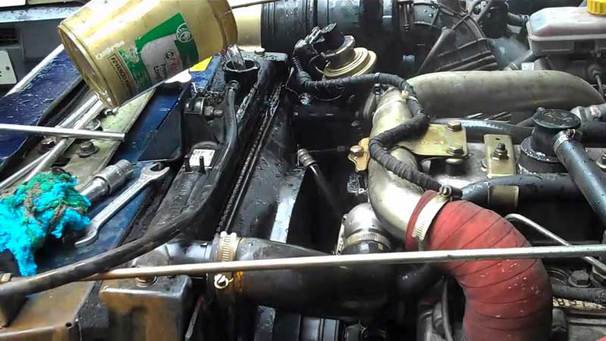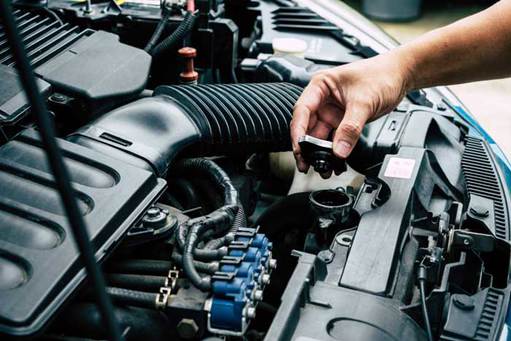For the wellbeing of your car, it is an indispensable factor to keep the thermostat in top-notch condition. And one of the key components of the entire regulatory system (also known as the thermostat) of your car is the radiator. Hence, if you want your car to give you its best performance, the radiators need to be at 100%!
And that is the sole purpose of this article. Here, you shall find all the details, including how to check the radiator flow, what it is, and how to deal with it if there is a problem with the machine. So, without further ado, let us get to the main stuff.
Why Is the Radiator Important?
When you hear the term radiator, what do you think it means? Well, if you feel that it has to do with something such as radiating, then you are right on the money. Besides, all the other answers that popped in your head are quite wrong.
Anyways, we are quite confident that you did select the precise answer. However, if you did not, then that is not an issue, as we shall be describing to you what a radiator is quite shortly!
You see, a radiator is an uncomplicated element of the car’s thermostat that just transfers all the heat that has been accumulated from the fluids and passes them outside, cooling down the car.
They are often used to moderate the transmission fluid, air intake, air conditioner, and sometimes they cool motor oil and the power steering liquids. In short, the radiator is an essential part of your car, so taking good care of the item is a mandatory job for you.
How to Check the Radiator?
If you are worried about how to figure out if there is a problem with your radiator or not, then this is the section for you! We have provided you the step-by-step procedure, which should allow you to inspect the machine more comfortably.
Step-1 (Park Your Car)
To check the radiators of your car, they have to be parked. If the engines are on, then you will not be able to check the item. So, it is a must that your car is not on the ignition and let the engine cool off for at least two to three hours. After that, remove the radiator caps before you do anything else.
Step-2 (Do a Thorough Inspection)
Now, you need to turn on the engine of your vehicle. And wait for at least two minutes before you start doing anything. We do this to make sure that the coolant starts moving around inside your car.
Next, take your flashlight and point it straight towards the radiator. So, the previous step was to ensure that the coolant was flowing without any hindrance and, thus, should allow you to check whether the flow is even or not. If the flow is not smooth, then that is an indication of something wrong with the device.
A fast way of checking the radiator’s flow is to ask someone to rev while you are checking under the hood. And, when you are doing that, make sure that you are squeezing on the radiator’s hose. Therefore, if there is a clog or a fault in the hose, it will stiffen, making it quite challenging to press on the tube.
Step-3 (Take Professional Help after the Test)
Your car is an integrated piece of machinery, and it would be unwise to meddle with it, especially if you do not know what you are doing. Hence, if you see any faults, call the mechanic, and ask them to fix it!
Things That Could Be Causing Your Radiators to Not Function Properly
Several things could be causing an issue with your radiator. However, the things listed here are the key obstacles, which could be preventing your radiators from giving you a hundred percent.
Central Heating System or the Boilers
One of the biggest problems that might be causing your radiators to operate at a hundred percent is faulty central heating, or there could be an issue with the boiler. And, if that is the case, then it is a big issue, and we suggest that you get it fixed almost immediately.
Make Sure There Is No Air Trapped
One of the most common problems that people face with radiators is trapped air. And the best way to get rid of the problem is by bleeding your radiator, which will eject all the trapped air inside it and ensure that the coolant is smoothly and efficiently flowing.
Examine the Valves
Now, if the air is cold all throughout the structure, then there might be a problem with the radiator’s valves. There could be several issues with the valves, and it is wise to take help from someone who knows regarding the matter.
Conclusion
The radiators are one of the main components that ensure the safety of your car. And if there is a fault in that, then we suggest that you get them checked with wasting any time. And that you can do easily as you know exactly how to check the radiator flow.
And if you are interested to learn radiator flush cleaning tips, then check out our guide.
However, if you are on the lookout for a quality radiator flush, then you must give our radiator flush reviews a read.

Myself Erick R. Jackson, I am a Computer Science graduate by law but a passionately enchanted blogger by profession.
A few years back, it all started with my first blog website. It was about to deal and heal with automotive hand tools. Well, it brought me a good audience base for sure, which then dragged me out of my major and got me to sit and write, and be a blogger. Read more


